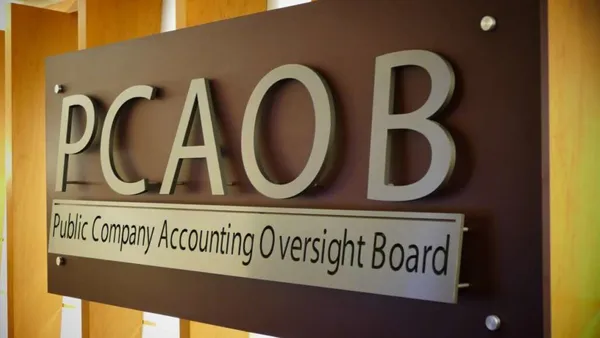Dive Brief:
- CEOs at large U.S. companies have downgraded sales forecasts and scaled back plans for capital investment and hiring during the next six months, the Business Roundtable found in a survey.
- Amid a softening economy, the Business Roundtable’s Economic Outlook Index fell this quarter below its long-run average for the first time since the third quarter of 2020 but remained above the level signaling expectations of a recession.
- “With continued supply chain challenges and inflation uncertainty, many CEOs remain cautious about domestic plans and expectations for the next six months,” General Motors CEO Mary Barra said in a statement. Barra serves as chair of the Business Roundtable, which represents CEOs at companies that employ 37 million workers and account for 24% of U.S. gross domestic product.
Dive Insight:
Recent economic data show the economy remains resilient even amid persistent bottlenecks in the supply of some goods, a slump in the housing market and an increasing number of forecasts of recession in 2023.
Factory output and service-sector activity have held steady, according to data released Monday, and employers added 263,000 jobs last month, the Labor Department said Friday, indicating just a slight cooling in the labor market from the first half of 2022.
At the same time, most economic forecasters believe the odds of a downturn next year exceed 50%, with recession most likely to begin during the first quarter of the year, the National Association for Business Economics (NABE) said Monday, citing a survey.
“We’re in a very uncertain time — an uncertain time given that we’re changing monetary and economic conditions very quickly — and that’s certainly having an impact of slowing down economic activity,” Goldman Sachs CEO David Solomon said Tuesday in an interview with Bloomberg TV.
“You have to assume that we have some bumpy times ahead,” according to Solomon, a member of the Business Roundtable. “I certainly think we could see a recession in 2023 also, and so I think you’ve got to be cautious and prepare.”
By far the greatest downside risk for the economy through 2023 is “too much monetary tightness,” NABE said, citing responses from 67% of the 51 forecasters that it surveyed.
Federal Reserve Chair Jerome Powell on Nov. 30 said the central bank, while combating the highest inflation in nearly four decades, will try to avoid excessively tightening monetary policy and causing a downturn.
“We wouldn’t just raise rates and try to crash the economy and then clean up afterward,” Powell said in an interview at the Brookings Institution. “I wouldn’t take that approach at all.”
The central bank this year has increased the federal funds rate by 3.75 percentage points in its most aggressive withdrawal of stimulus since the 1980s. Powell signaled last week that policymakers will likely raise the benchmark rate by a half point at a Dec.13-14 meeting.
“What keeps me awake at night is the stance of U.S. monetary policy and the huge challenge that the Fed has in getting that call right,” David Bowers, managing director at Absolute Strategy Research, said Monday during an NABE webinar.
“In terms of bond yields, in terms of policy rates, you’ve got the strong dollar, you’ve got quantitative tightening — this really is a major shock,” Bowers said, referring to the Fed’s rapid reduction in stimulus. “Not many people have seen a shock of this magnitude before.”
Nearly half of CEOs (49%) identified labor costs as the top inflationary problem for their company, the Business Roundtable said, followed by 15% who flagged material costs and 14% who pointed to costs from supply chain disruptions.
Only 39% of CEOs plan to increase employment in the U.S. during the next six months compared with 47% in the third quarter and 77% in the fourth quarter last year, according to the Business Roundtable.
The CEOs predicted that the economy will grow 1.2% in 2023, the Business Roundtable said. CEOs at 142 companies completed the survey, which was conducted from October 31 through November 28.















